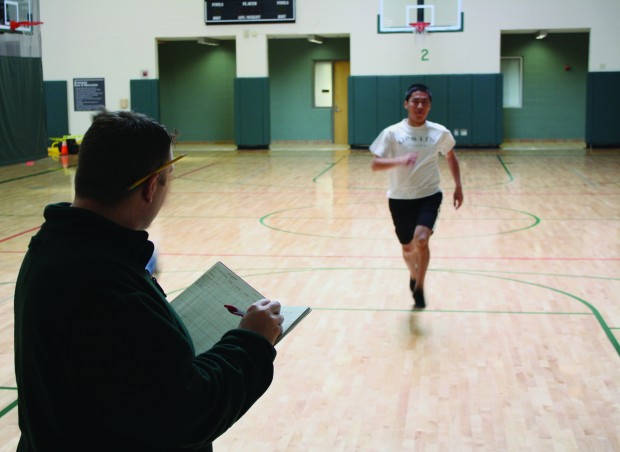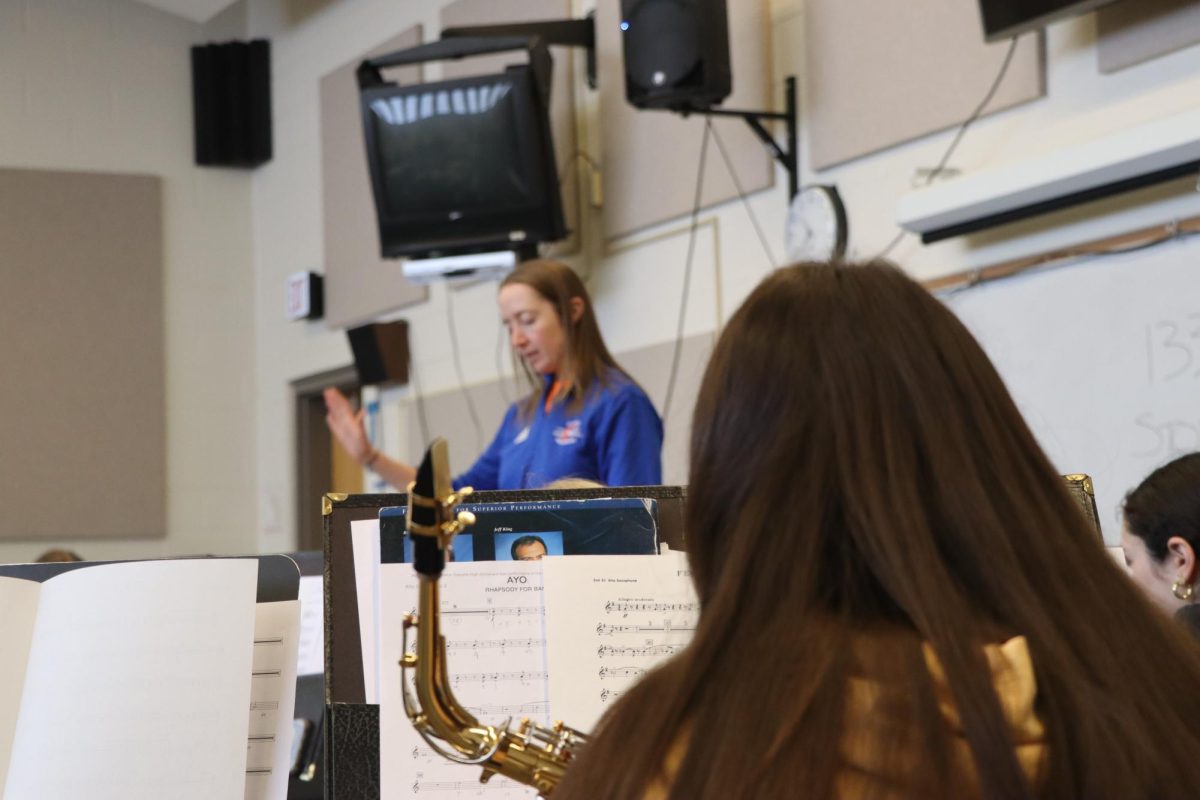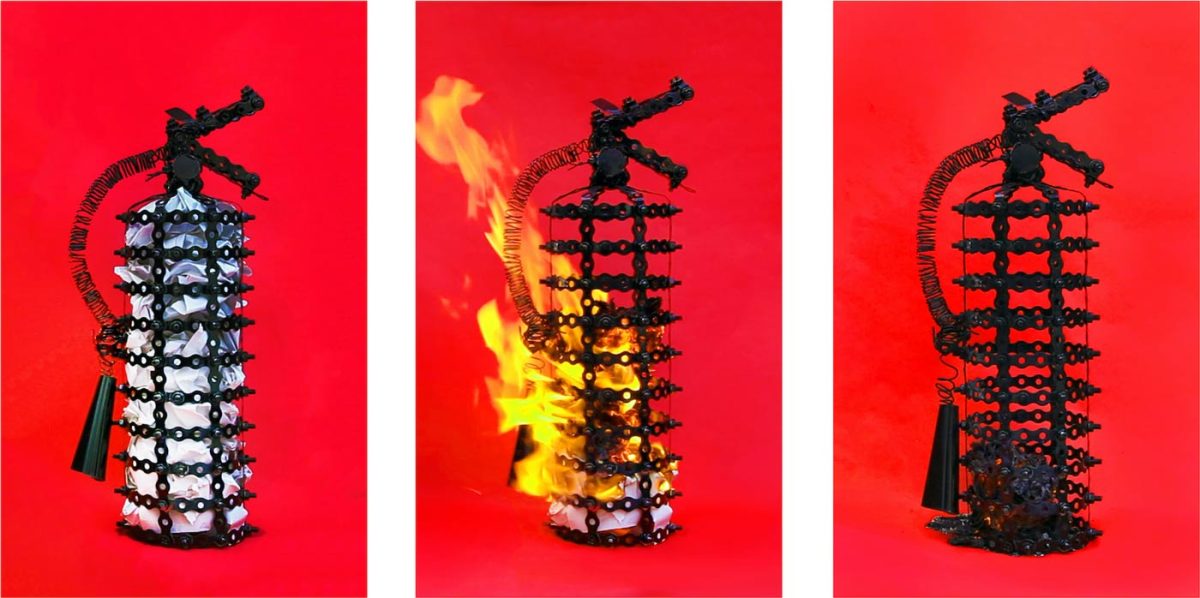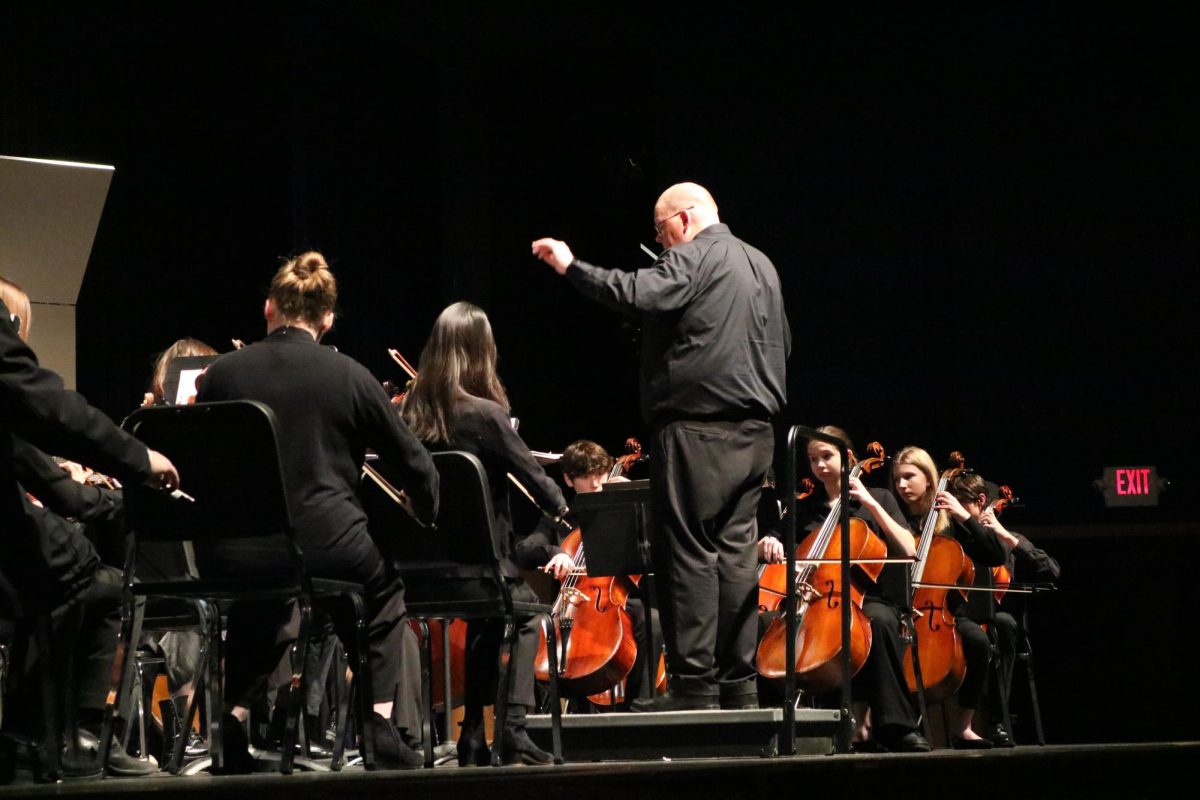The Pacer. It’s a simple word that, for most, brings back a flood of undesirable memories from middle school and elementary school. As of this year, however, the Pacer is no longer a thing of the past.
The Pacer was used as part of the independent study fitness curriculum for the first time this year.
“The Pacer was introduced this year because several years ago we started going through our curriculum design as an entire district as it related to vertical and horizontal alignment with the elementary schools, middle school, and high school,†IS Fitness teacher Samuel Horrell said. “One of the things we found was we didn’t have a common assessment across our curriculums and we didn’t have a midterm assessment for IS Fitness, so we thought it was a natural fit there.â€
In short, the Pacer is a test of cardiovascular fitness. Students are lined up at one end of a gym and must run to the other side of the gym in a given length of time, marked by beeps. As the Pacer goes on, the length of time allotted gets shorter and shorter.
Though the Pacer seems a fairly standard test, many thought the way it was carried out was unfair. The Pacer is a flat grade based solely on how far any student gets into the test. Senior Erica Eisenberg maintains that no one in her class earned above a C grade.
“The people in my class were all pretty in shape, so if none of us were able to get above a C, that shows how hard the grading was,†Eisenberg said.

Horrell agrees that most students were unable to perform in the A to B range.
“I’d say the average grade was somewhere around a C to a B-,†Horrell said. “I think people didn’t know what to expect or they forgot how intense the Pacer was from when they were in elementary school or middle school.â€
Other students maintain that a single test cannot possibly demonstrate the overall level of someone’s fitness.
“I don’t think testing once is necessarily fair because not everyone is at their best ability at that time and not everyone can sprint well,†junior Alex Trivundza said. “I don’t think the test would necessarily show if you had been working out or not.â€
Students protested further at the idea of grading based on physical fitness instead of progress. Given the difficulty of the Pacer, it would be impossible to score well if one wasn’t in shape.
“At the beginning and end we do a mile test, so that really tracks progress versus the Pacer which is just a sporadic testing,†senior Taylor Gold said.
Eisenberg agrees that the Pacer is very different in nature than the other tests of physical fitness that are a part of the IS Fitness curriculum. At the beginning of the semester, students run the mile, do pushups and sit ups, and make goals for themselves. At the end of the semester, students retest to see if they have met those goals.
“All of the tests for IS Fitness would be hard for someone who doesn’t work out regularly, but the tests you take at the beginning and end of the semester are just about reaching goals,†Eisenberg said. “It’s less about grading you on your ability and more about making goals to get healthier.â€
The Pacer test makes up 100 points of the total IS Fitness grade, which is 1800 points. In the end, Horrell says, the Pacer only has the ability to change a student’s grade by a few percentage points. Still, though the class is difficult, Horrell maintains if students work hard they will receive a satisfactory grade.
“The ultimate goal of IS Fitness is to help [students] become independent with their physical fitness,†Horrell said. “It’s an opportunity to treat them as if it’s a college course and they have to carry out the duties and responsibilities on their own. It’s for students who are serious about their fitness and who are dedicated to working hard. It’s not for everyone.â€






